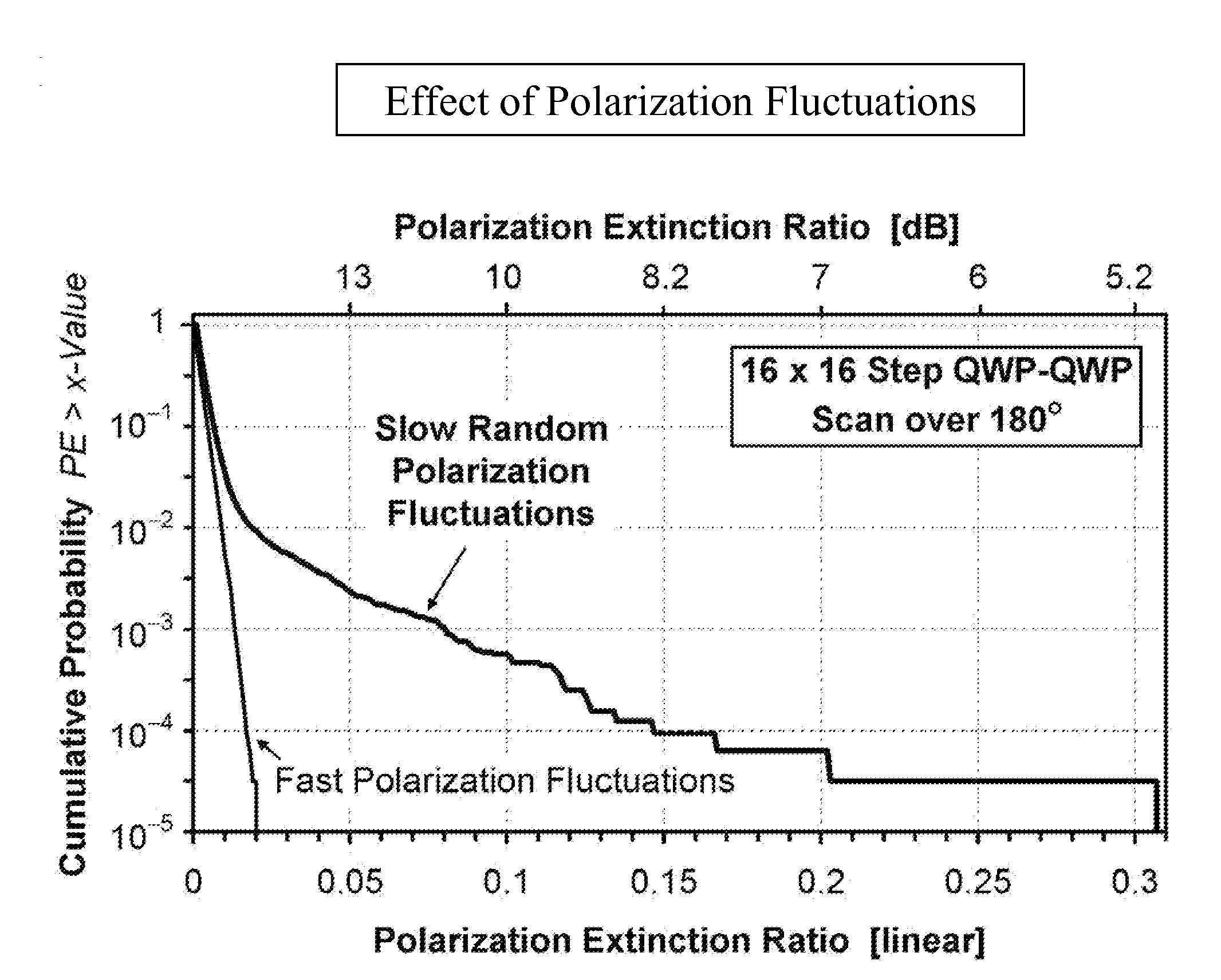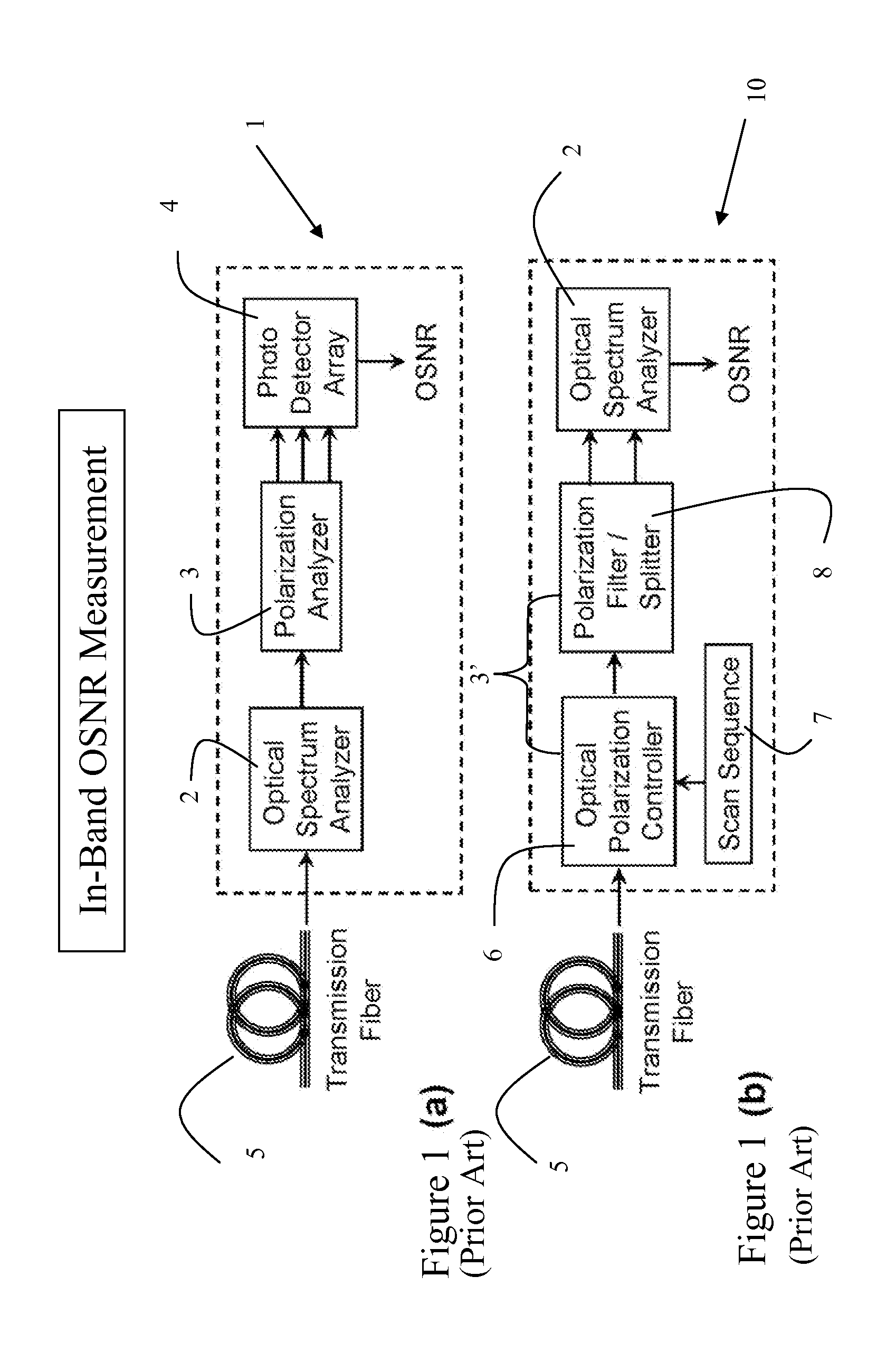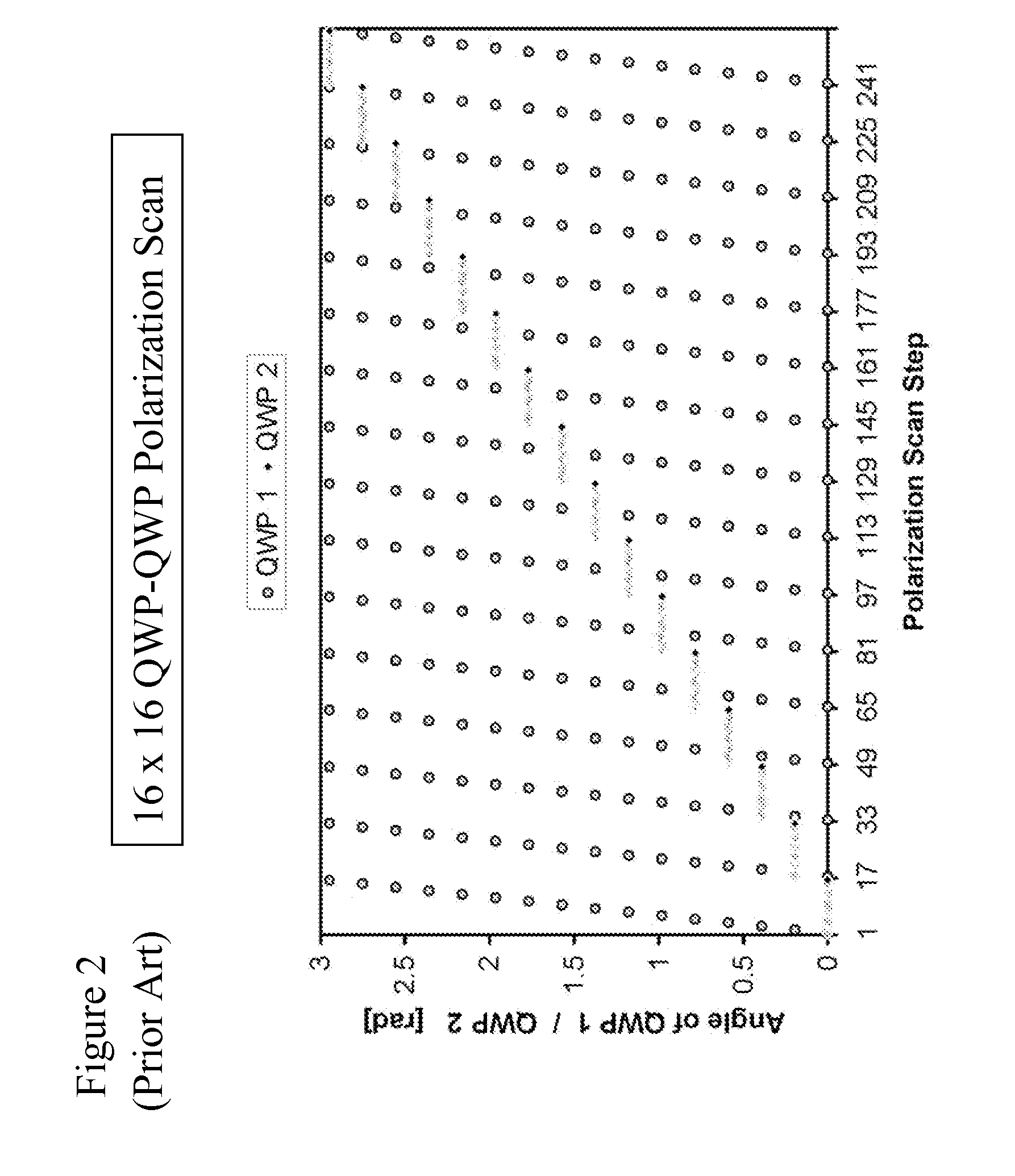Determining in-band optical signal-to-noise ratios in optical signals with time-varying polarization states using polarization extinction
a technology of polarization extinction and optical signal, which is applied in the direction of optical radiation measurement, electromagnetic transmission, instruments, etc., can solve the problems of large potential, difficult to measure the optical noise floor between adjacent signals in the received optical spectrum, and the degraded signals transmitted over long-distance fiber-optic communication systems. , to achieve the effect of limiting the degradation of the calculated polarization extinction ratio
- Summary
- Abstract
- Description
- Claims
- Application Information
AI Technical Summary
Benefits of technology
Problems solved by technology
Method used
Image
Examples
Embodiment Construction
[0044]Polarization controllers for transforming a given input polarization state into a multitude of output polarizations states normally are composed of several elements or stages, whereby each stage changes the state of polarization in a substantially different way. An exemplary embodiment of a polarization controller comprises a combination cascade of two optical wave plates at variable angular orientation, which may be composed of two rotatable quarter-wave plates (QWPs), as illustrated for example in FIG. 7(b), or of a QWP and a half-wave plate (HWP). The wave plates may be rotated mechanically or by means of a electro- or magneto-optic effect. To generate a suitable sequence of substantially different polarization states, the angular orientation of these wave plates may be adjusted in a number of predetermined steps and in a systematic fashion. In the above example, in which the polarization controller is comprised of two cascaded QWPs, the angle of each QWP may be varied in a...
PUM
 Login to View More
Login to View More Abstract
Description
Claims
Application Information
 Login to View More
Login to View More - R&D
- Intellectual Property
- Life Sciences
- Materials
- Tech Scout
- Unparalleled Data Quality
- Higher Quality Content
- 60% Fewer Hallucinations
Browse by: Latest US Patents, China's latest patents, Technical Efficacy Thesaurus, Application Domain, Technology Topic, Popular Technical Reports.
© 2025 PatSnap. All rights reserved.Legal|Privacy policy|Modern Slavery Act Transparency Statement|Sitemap|About US| Contact US: help@patsnap.com



